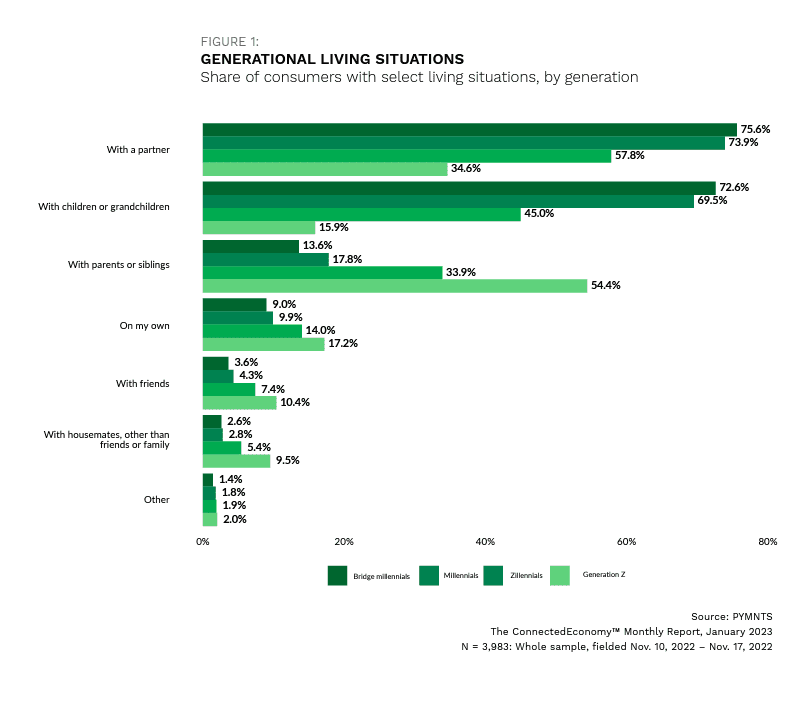The share of the zillennial micro-generation living with others tops 85%.
Zillennials, the term coined for 30 million digital-native consumers born between 1990 and 2000 that bridges the tail-end of millennials and the oldest among Generation Z, are coming into their own. Bridging tail-end millennials and older Generation Z members, zillennials are the youngest age cohort to reach majority as a whole, and attain the financial freedom that comes with adulthood. This means zillennials may be a more useful demographic to study when it comes to the economy than Gen Z, given that many in this group are under 18.
Housing is the biggest expense for many consumers regardless of age, and PYMNTS’ report “The ConnectedEconomy™ Monthly Report: Meet the Zillennials,” finds that this cohort nearly universally cohabitates with others. This tendency towards cohabitation, in whatever configuration, may be at least partially driven by efforts to save.

With only 14% of surveyed zillennials saying they live alone, the overwhelming majority cohabitate. This group has a variety of housemates: 58% live with a romantic partner, 34% live with their parents or siblings and 13% live with either friends or other housemates. Our research found that living arrangements overlapped, with some living in multigenerational homes or other mixes. Sharing housing costs may partially explain why this cohort has more discretionary income than consumers falling into the older brackets.
The ConnectedEconomy™ finds zillennials are 30% more likely to say they do not living paycheck to paycheck: 22% of zillennials do not living paycheck-to-paycheck, compared to 17% of both millennials and bridge millennials. This may be due to 54% of zillennials working full time while having fewer expenses than their older peers. Zillennials are less likely to have children or own houses, although this will change as this cohort ages.
This extra income from living with others and having fewer expenses may afford zillennials a bit more financial freedom to shop. This may explain why their spending and transaction habits are more convenience-driven than millennials or bridge millennials. While 92% of zillennials prefer to shop in-store despite being digital natives, they are also leading the charge in consumer demand for cross-channel experiences.
This is an opportunity for retailers concentrating on the cross-channel features they seek to enhance their customer experience to attract zillennial consumers and convert them into loyal customers even as the economy continues its rocky trajectory. Cross-channel and convenience features retailers should prioritize include increased payment options, curbside pickup and installment plans like buy now, pay later.
As consumer spending sinks and competition for discretionary dollars gets fiercer, any possible implementation headaches may be well worth appealing to zillennials, the age cohort with the most extra to expend.